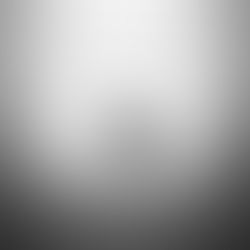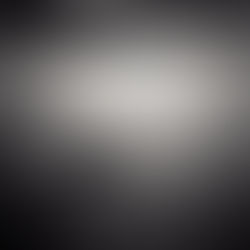BARBARIANS AND BRUTALISTS
- Nov 7, 2017
- 4 min read
[For DJL]
Who designed the dial on the paper towel dispenser? You know, that round dial with the two tear drop depressions, in a kind of yin-yang orientation at its center. You must have used this thing. From a design or engineering perspective it seems like a curious mistake. Almost uniquely, this paper-dispensing mechanism fails ergonomically and mechanically, on health and accessibility grounds, from an aesthetic point of view, and, very likely, on cost as well.
To start with, the ergonomics just make no sense. To turn the dial and cause paper to eject from the contraption there are two tiny points of contact that require a thumb and finger placed just so, making for awkward operation. As well, the depression you put your top finger in sits below the depression for your thumb, your bottom finger, making it more difficult to turn than otherwise, and pointlessly so. The mechanism is also, very curiously, right-hand biased through its placement on the right side and not on the face of the dispenser. Just try grabbing that thing and turning it with your left hand.
You really can't. What makes the design even more confusing is the material. The dual-dimpled dial is a smooth, high-gloss plastic that you have to rotate with far too much force – in a strange twisting-but-not-gripping manner, using only two fingers pushing at two small points of contact – with hands that are always going to be wet and may have residual soap on them. Almost any other construction and configuration imaginable would be far easier for anyone (a child, a left-handed person, someone with arthritis, an amputee or person born with one hand...) to use. Other mechanisms you've used aren't biased at all in these ways and may be operated with ease using a chin, elbow, knee, foot, prosthesis, cane, or the beak of your seeing-eye ostrich if so desired or needed. On these design missteps alone I can't see how this dial survived even passive scrutiny.
Then there are the communicable-illness-transmission-enabling aspects of this washroom appliance. The purpose of the sink, soap, and paper towel are, I naively assume, for personal and general public health. So then it's with this in mind (because what else could they possibly be thinking) the designer created a dimple in the turning mechanism that forms a little reservoir for capturing the moisture that's intrinsic to the task of hand drying. Along with this are plenty of needless bevels, seams, and grooves that might be fine inside the engine of a car or on the body of a watch but makes this public washroom appliance needlessly difficult to sanitize, short of submerging the whole thing in bleach. Why? I cannot imagine.
The above are, or should be, the base considerations; which, in this case, appear overlooked or disregarded. But then there are the aesthetic elements of this designed fixture, such as it's colour. Described variously as pale cream, pale sandy fawn, greyish tan, or beige (CMYK: 0,0,10,4; RGB: 245, 245, 220; or Hex: #F5F5DC), this colour is commonly thought of as a kind of benign, neutral tone. I feel it's anything but. Naturally, beige is the colour of raw sheep's wool. In this context though beige (or as I like to call it: “80s office equipment”) transmutes from raw, natural, and soft into their antithesis: something deeply artificial and unpleasant. This tone, along with its lighter and darker tints and shades, in our culture at least, is the primary colour of plastic and the non-colour of brutalism and totalitarianism. Beige is really the Helvetica of colours. Beige is to me the pigmentation of order, monotony, and discomfort. It demands sternly, "look away, nothing to see here" as its accomplices khaki, desert sand, and cosmic latte bundle a bit of your soul into their unmarked van and carry it off never to be seen again. Beige is the colour of houses built for foreign investors and for flipping rather than as a home for living creatures. Is there any doubt? If listlessness or ennui had colour we would likely see beige. If you sucked the life out of colours like orange or pink, brown or green, and let them sit in the fridge for six weeks you'd find a lump of beige (but only if first you sterilized them to ensure they wouldn't grow the beautiful and sharp living colours of common moulds.)
What explains all this? Often terrible designs emerge due to cost considerations. Typically a colour or material or element is chosen, either by a designer or a buyer, because it's much cheaper than an alternative. But that isn't the case here. This dial design uses no less material than something much better.
To test this you could easily take some clay, shape it into something like what I've describes, and then produce another shape that is easier to use, and cleaner, while using less material. Doing so you might come up with something resembling a wing-nut or the temperature dial on your oven or stove. See. It's not rocket surgery, people.
This begs asking what's the element of design this thing hits a home run on (and has thus made it now nearly ubiquitous)? From where I sit, you really couldn't get a thing more wrong. This feels to me as though, like so many other things, the person who constructed it had no regard for the device's purpose nor the humans that would use it. So what were the considerations? I would love to know. And then what kind of fanatical dystopian mass produces and sells it? And then what kind of barbarian buys it and installs it for other humans to use?
Worst of all, this paper dispenser is surely a perfect example of where nothing at all, no dispenser and just a roll of paper towel, would be a vast improvement over this large plastic contraption, mounted to the wall and full of plastic parts that fail, which runs out and has to be regularly monitored and refilled by an employee. Madness. Expensive madness. Madness brought into almost every business and building in the land. But why?
(While you figure that out I'll compose something about why we use paper towel in the first place and how ridiculous that is...)

Related Posts
See AllThe following is just the sort of thing I see that stops me in my tracks almost every day. Today I was walking past a large corporate...





























































Comments